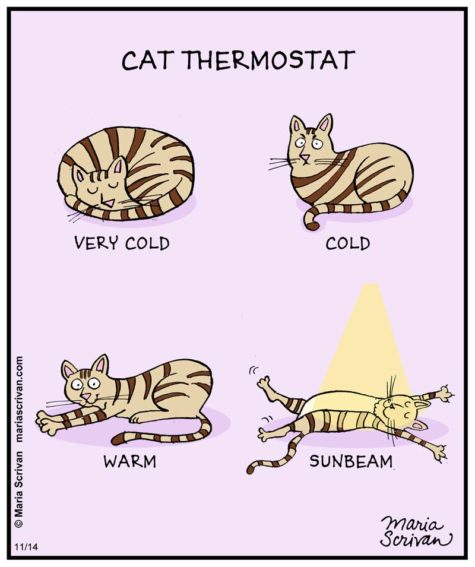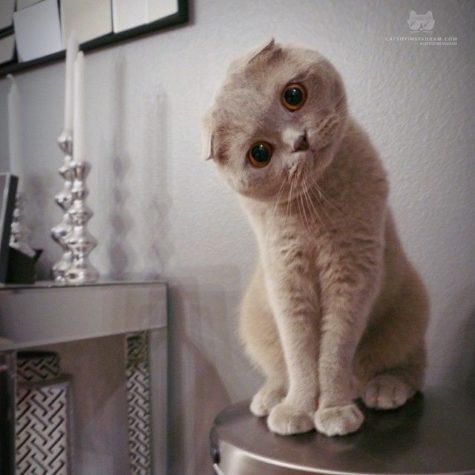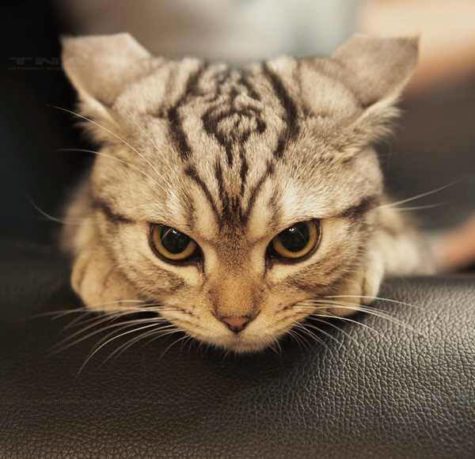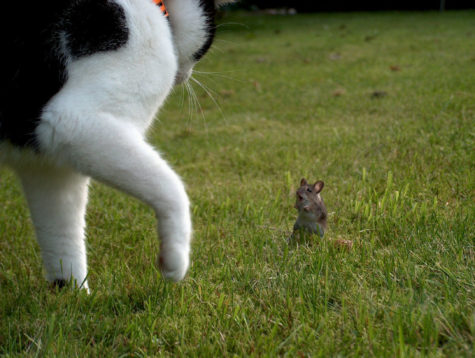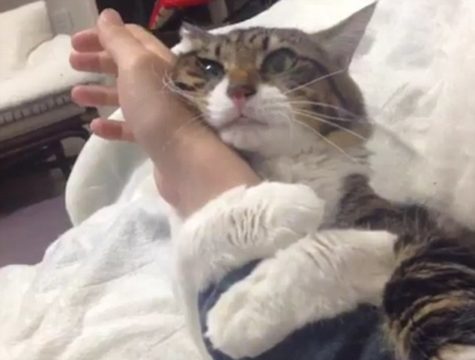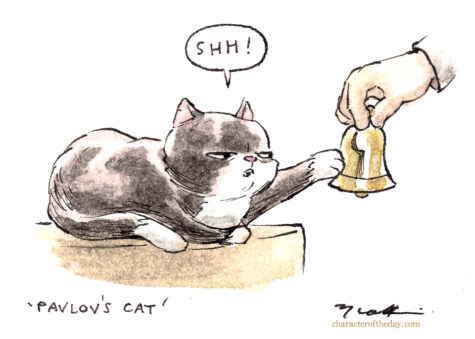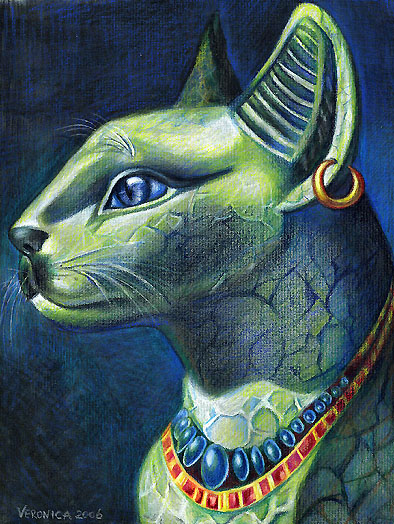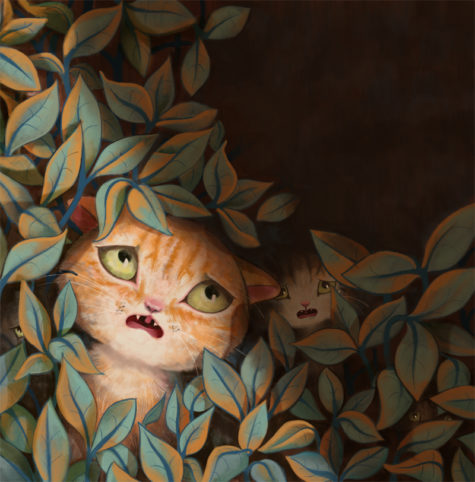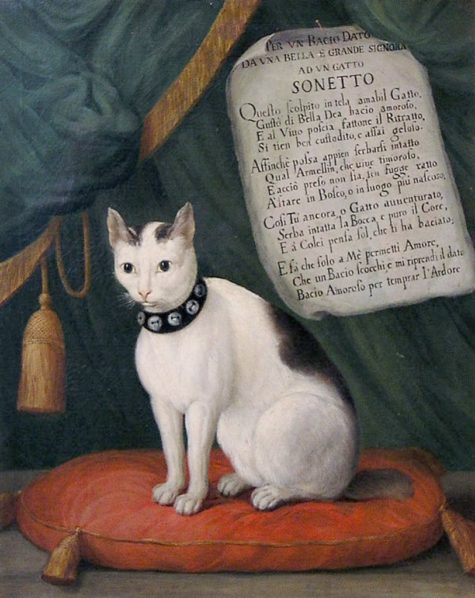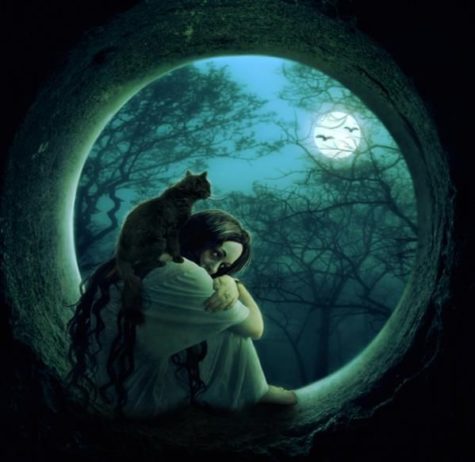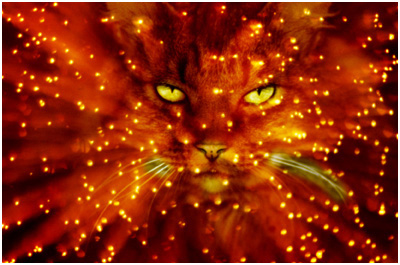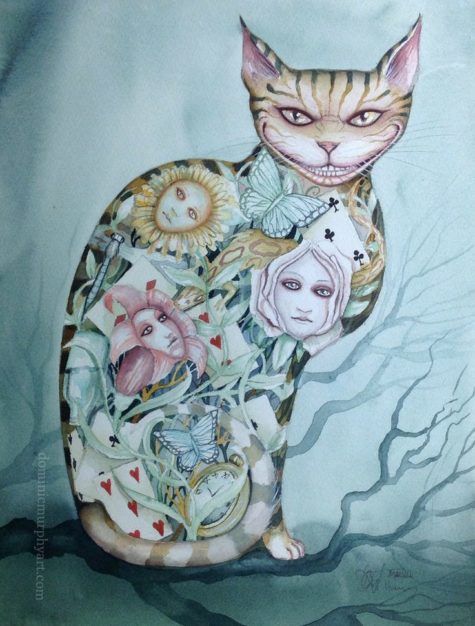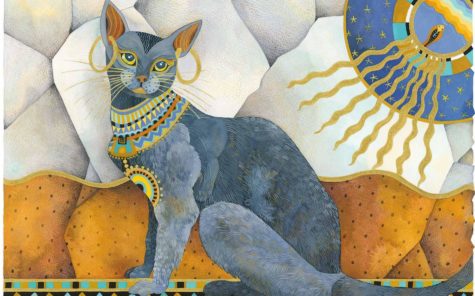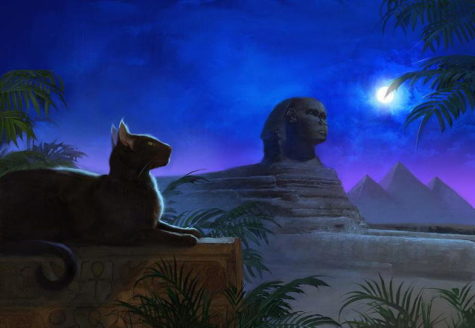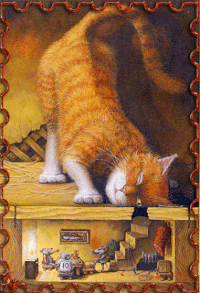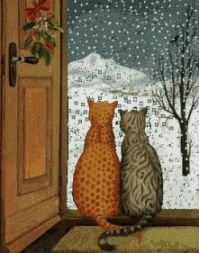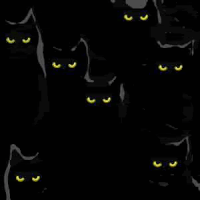Monthly Archives: June 2018
It’s A Cat Thermostat
A Cat’s Guide To Humans
Introduction: Why Do We Need Humans?
So you’ve decided to get yourself a human being. In doing so, you’ve joined the millions of other cats who have acquired these strange and often frustrating creatures. There will be any number of times, during the course of your association with humans, when you will wonder why you have bothered to grace them with your presence. What’s so great about humans, anyway? Why not just hang around with other cats?
Our greatest philosophers have struggled with this question for centuries, but the answer is actually rather simple: They Have Opposable Thumbs. This single attribute makes them the perfect tools for such tasks as opening doors, getting the lids off of cat food cans, changing television stations and other activities that we, despite our other obvious advantages, find difficult to do ourselves. True, chimps, orangutans and lemurs also have opposable thumbs, but they are nowhere as easy to train and their incomes are limited.
How And When to Get Your Human’s Attention
Humans often erroneously assume that there are other, more important activities than taking care of your immediate needs, such as conducting business, spending time with their families or even sleeping. Though this is dreadfully inconvenient, you can make this work to your advantage by pestering your human at the moment it is the busiest. It is usually so flustered that it will do whatever you want it to do, just to get you out of its hair. Not coincidentally, human teenagers follow this same practice.
Here are some tried and trusted methods for getting your human to do what you want:
- Sitting on paper:
An oldie but a goodie. If a human has paper in front of it, chances are good it’s something they assume is more important than you. They will often offer you a snack to lure you away. Establish your supremacy over this wood pulp product at every opportunity. This practice also works well with computer keyboards, remote controls, car keys and small children.
- Waking your human at odd hours:
A cat’s “golden time” is between 3:30 and 4:30 in the morning. If you paw at your human’s sleeping face during this time, you have a better than even chance that it will get up and, in an incoherent haze, do exactly what you want. You may actually have to scratch deep sleepers to get their attention. Remember to vary the scratch site to keep the human from getting suspicious.
Punishing Your Human Being
Sometimes, despite your best training efforts, your human will stubbornly resist bending to your whim. In these extreme circumstances, you may have to punish your human. Obvious punishments, such as scratching furniture or eating household plants, are likely to backfire. Being unsophisticated creatures, humans are likely to misinterpret these activities and then try to discipline YOU. Instead, we offer these subtle but nonetheless effective alternatives:
- Use the cat box during an important formal dinner.
- Stare impassively at your human while it is attempting a romantic interlude.
- Stand over an important piece of electronic equipment and feign a hairball attack.
- After your human has watched a particularly disturbing horror film, stand by the hall cupboard and then slowly back away, hissing and yowling.
- While your human is sleeping, lie on its face.
Rewarding Your Human: Should Your Gift Still Be Alive?
The cat world is divided over the etiquette of presenting humans with the thoughtful gift of a recently disembowelled animal. Some believe that humans prefer these gifts already dead, while others maintain that humans enjoy a slowly expiring cricket or rodent just as much as we do, given their jumpy and playful movements in picking the creatures up after they’ve been presented.
After much consideration of the human psyche, we recommend the following: cold blooded animals (large insects, frogs, lizards, slow-worms, grass snakes and the occasional earthworm) should be presented dead, while warm blooded animals (birds, rodents, your neighbor’s Chihuahua) are better still living. When you see the expression on your human’s face, you’ll know it’s worth it.
How Long Should You Keep Your Human?
You are only obliged to your human for one of your lives. The other eight are up to you. We recommend mixing and matching, though in the end, most humans (at least the ones that are worth living with) are pretty much the same. But what do you expect? They’re humans, after all. Opposable thumbs will only take you so far.
Found at: Moggycats Cat Pages
Simon’s Cat Finds Something To Do
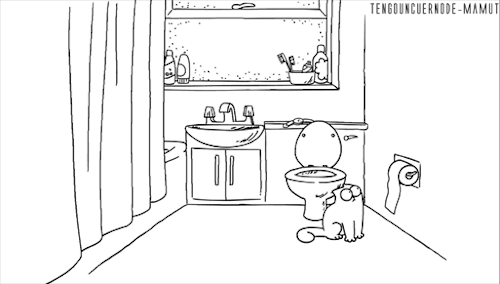
Looks like Simon’s cat has found something fun to do.
🙂
Pavlov’s Cats
Everyone has heard of Pavlov’s Dogs and many have heard of Schroedingers Cat. But what of Shroedinger’s Dog and Pavlov’s Cats?
Let’s not concern ourselves with Shroedinger’s Dog, a creature so incredibly stupid and perpetually confused it has difficulty being in one state at a time let alone being in two states simultaneously. When put into a box with a decaying vial of poison which might or might not release the poison, Shroedinger’s Dog chews the vial thus ensuring it ended up in a dead state every time.
Pavlov’s Cats is a far more interesting a subtle experiment into feline-human behaviour. Pavlov was a Welsh behavioural scientist who conducted experiments into ringing bells and cats eating food. His experiments went something along the lines of:
- Day 1: Rang bell. Cat buggered off.
- Day 2: Rang bell. Cat buggered off.
- Day 3: Rang bell, but cat put paw on bell so it only made a ‘thunk’ sound.
- Day 4: Rang bell, cat said he’d eaten earlier.
- Day 5: Tried to ring bell, but cat had taken batteries out of bell.
- Day 6: Cat rang bell. I ate food.
Sure enough, the Pavlov’s Cat experiment proves that scientists can be conditioned to eat cat food and that cats eat only when it suits them. Many scientific discoveries have been made accidentally while trying ot prove something entirely different.
The experiment might have worked had the cat not been buggering off to next door where it had already conditions Pavlov’s neighbor to give it a nice plate of chicken liver. Who knows, it might even have rung the bell and conditioned him to open the door as well, just like my cat has conditioned me …
Pavlov’s second attempt, with new cat possibly went something like this:
- Day 1: Rang bell. Cat (white) asleep.
- Day 2: Rang bell. Cat (white) rolled over and snored.
- Day 3: Rang bell. Cat opened eye (blue), yawned, complained about cheap brand of cat food.
- Day 4: Rang bell. After 4 hour delay, cat woke up, ate food, went back to sleep.
- Day 5: Read article about deaf blue-eyed white cats.
- Day 6: Cat woke me up by sitting on head. Fed cat. Bought dog. Dog drools.
From: Moggy Cats Cat Pages
The History Of The Domestic Cat
Our English word “cat” doesn’t seem to have come into general usage until around 300 A.D., give or take a few decades or so. It is interesting to note that several of the world’s languages call this animal by a name very similar to the English words “cat” or “puss” (which itself is believed to have derived from the name of the ancient Egyptian goddess Pasht, a cat-headed deity who was considered a darker manifestation of Bast; a.k.a.Bastet, acknowledged as the Mother of ALL cats and a goddess).
For instance, all the following examples are the words for the creature we call “cat”:
- French ~ Chat
- Welsh ~ Cath
- Arabic ~ Kitt
- Polish ~ Kot
- Syrian ~ Kato
- Sanskrit ~ Puccha
- Persia ~ Pushak
- Italian ~ Gatto
- Spanish ~ Gato
- Lithuanian ~ Puize
- German ~ Katze
- Russian ~ Kots
- Irish ~ Pus
As for the Egyptians, they called the creature Mau, meaning “to see.” No doubt the name also made onomatopoetic reference to the cat’s familiar meowing. No one really knows for certain, but it is believed that the cat may have been domesticated by these ancient Egyptians 4,000 to 5,000 years ago; relatively recent when you consider that the dog has been a companion to humans for 20,000 years, perhaps even longer. Some experts theorize that this human/dog relationship may have been going on as long as 50,000 years. As a result, the cat has retained many of its natural instincts and behaviors, having only been among humans a short while, whereas dogs have evolved right alongside us for quite some time now.
There is something about their confident personality that we admire. In fact, the ancient Egyptians were so fascinated by this detached quality of the cat that they considered them to be nothing less than godlike. To the Egyptians all cats were divine, and extreme behavior was often acted out to reinforce this conviction. For instance, if a someone happened to come across a dead cat in the street, he or she would put on a loud display of sorrow and mourning just to make sure no one thought that they were responsible for killing the cat. You see, according to Egyptian law, being found guilty of cat murder was punishable by death.
Whenever a household cat died of natural causes, the entire family would go through a period of grief, shaving their eyebrows as a mark of their sadness. Deceased cats were very often mummified and entombed with fine jewelry and treasures; a custom usually reserved for only the most powerful and wealthy of the ruling class.
But by far, the most fanatical demonstration of Egypt’s devotion to her cats occurred in 500 B.C.2 during a period of warfare with Persia. At the city of Pelusium, the Persian and Egyptian armies engaged in fierce combat, but the Egyptians resisted the onslaught with a fixed determination to save their city. The resolve of the Egyptian war machine proved too much for the rapidly tiring Persian army. Sensing ruinous defeat if the battle continued, the Persians retreated while they still could. The Egyptians knew that this wouldn’t be the end of it, so the army maintained a condition of battle readiness, waiting for the Persians to return.
What the Persians were up to was a brilliant scheme that displayed a profound understanding of their enemy’s culture and beliefs. They discovered a kink in the Egyptian armor, a weakness they would fully exploit. Night after night, the Persians deployed their elite forces to the villages and towns of the surrounding countryside, silently capturing as many cats as they could lay their hands upon. Once satisfied with the number of animals they’d collected, the Persian army returned to the city of Pelusium.
The Egyptians first noticed the distant clouds of dust, kicked up by the approaching Persian army, at dawn. The troops were readied for battle in an orderly manner, well rested and ready for combat.
Within an hour, the two armies positioned themselves in assembled ranks, glaring at each other across the battlefield. The Egyptian General signaled for the attack. In an instant, the Egyptian army charged upon the Persians who, oddly enough, held their ground. The Egyptians roared like thunder as they rapidly advanced on the Persian front line. Suddenly, there was movement within the Persian forces. Curious, but undaunted, the Egyptians continued their charge.
Then, they saw a sight that nearly froze them in their tracks. Hundreds of panic stricken cats were released upon the battlefield. The Egyptian army watched in horror as the sacred animals ran about in deadly fear.
Confusion spread through the Egyptian ranks as the Persian army seized the opportunity to take the aggressive. Advancing upon the stunned Egyptians in a evenly paced march, each of the Persian soldiers held forth a terrified cat. The Egyptians knew then and there that they were defeated.
Not a single Egyptian soldier dared to engage the enemy, fearing that to do so might endanger the lives of the cats. Without suffering a single casualty, the Persians secured their victory, devastating the Egyptians.
It has been suggested that the Egyptians initially used the cat to control the rodent population which continually destroyed crops. This seems to be a reasonable speculation, but it’s obvious that the cat meant much more to the Egyptians than that. Kingdoms don’t loose wars merely for the sake of four-legged mousetraps.
Certainly, something of the cat’s behavior suggested that a very powerful spiritual connection existed between humans, cats, and the gods. The Pharaohs and the priests alike were quite protective of their honored feline population. The distribution of cats throughout the Kingdom was carefully regulated, while exportation of cats was absolutely forbidden. Since the cat insured agricultural security by keeping away harmful pests, a surplus of goods was able to develop which gave Egypt wealth and strength, and plenty of economic clout when it came to dealing with other countries. No wonder they guarded these animals so closely. The domesticated cat was nothing less than a priceless secret weapon that contributed immeasurably to the greatness of ancient Egypt.
But eventually domesticated cats did find their way out of Egypt thanks to the Greeks who stole the animals to control their own rodent problem, and to use as powerful bargaining chips in international trade. This didn’t go over so well with the Egyptians. In fact, one Pharaoh sent out his army to various lands in a futile effort to recapture the liberated felines and return them home to Egypt.
Unfortunately for the Egyptians, it was too late. Warfare and trade had resulted in the distribution of domesticated cats throughout the Mediterranean and perhaps by this time, even as far as Asia. The Egyptian monopoly on domestic cats had at last come to an end.
Phoenician cargo ships are thought to have brought the first domesticated cats to the European continent around 900 B.C. In time, the Romans adopted the cat as a symbol of freedom and liberty. Never quite venerating felines to the extent of the Egyptians, the Romans nevertheless held the cat in high regard, and it is believed that they are responsible for introducing the cat to Britain during the course of their numerous campaigns of conquest in that region.
Over the subsequent centuries, the domesticated cat proliferated throughout Europe, the Middle East, and China. Though no longer worshiped as deities, cats were still honored and appreciated for their mousing abilities no matter where they turned up. By the 11th Century, about the time the Crusades began, cats were in huge demand since the rats were beginning to overrun the cities. Domesticated cats could now be found as far as Scotland.
While their obvious hunting abilities were being put to good use, the domesticated cat retained its mysterious, otherworldly aura of heavenly protector and benefactor.
Catholic Monasteries kept cats as guardians (that is, until the Church decided that they didn’t like cats anymore); Sailors would bring along cats during long sea voyages believing they possessed miraculous powers to protect them from dangerous weather; in a very short time, the cat spread throughout the world, becoming a treasured companion and friend.
All seemed well for these cats and the people that loved them, for a good long time in fact. Unfortunately, this was not to last. By the close of the 15th Century, Pope Innocent VIII decided that adulation for cats was tantamount to pagan worship in defiance of God. This led to the belief that cats were evil, existing solely to mislead and destroy the faithful.
The Inquisition was given instructions to hunt down all cat owners and try them as heretics and witches. For a while, cats were burned to death by the hundreds, right along side their human caretakers. The crime: “consorting with demonic forces.”
It was a far cry from their exalted days in ancient Egypt.
But cats persevered. In fact, they flourished. Centuries passed as people of various cultures spread diverse influences across the globe, while the stoic cat accompanied this progress each step of the way. And through it all, the cat has thankfully retained its independent qualities, its silent contemplative nature, its persona of supernatural wisdom.
Obviously cats won’t be leaving the scene anytime soon. They are very much a part of our our consciousness, both culturally and spiritually. Their traits are often used to describe human activities. To comment on their independence is nothing more than a safe cliché. Being such an ubiquitous animal, we tend to take them for granted, but remember this: They are the descendants of temple dwelling cats, domesticated by the Egyptians and regarded as sacred. To ignore their unique lineage is to sever all metaphorical links to our mystic past, and this would indeed be a tragedy.
Found at: Low Chen’s Australia
I Am The Cat
The Cat
A Curious Anecdote
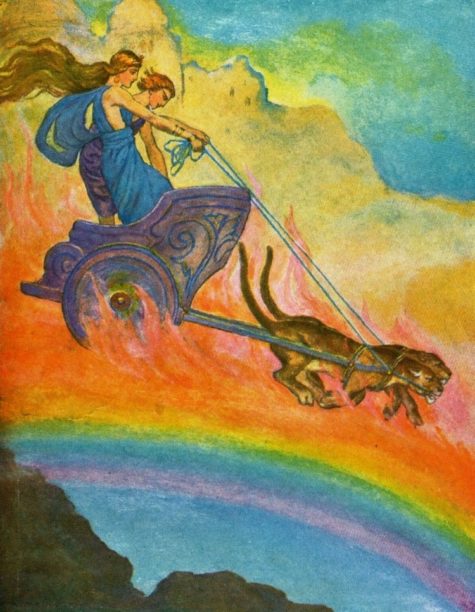
In the epic poem known as “The Kalevala” (composed by Elias L”nnrot and first published in 1835, though based on traditional folktales), you will find this curious anecdote…
It seems that a witch decided to one day invite herself into a house that happened to be filled with people. Upon entering this house the witch began to dance around while muttering bizarre incantations, much to the chagrin of all who were present.
All at once, the people found themselves transported onto a sleigh drawn by a giant magical cat. This mysterious cat pulled the sleigh at fantastic speeds until it finally came to “Pohjola”, a place where evil resides in everlasting night, located deep within the hinterlands of Finland.
Why? How come? What did those people ever do to the witch? How did a cat get mixed up in all this, anyhow? And why decide to ask such questions NOW?
Actually, the Finns believed that cats led the souls of the departed through the obstacles of hell onto the glories of heaven.
This motif of “cat-as-guide-to-the-beyond” is rather common. In Egypt there is the story of Bast the cat goddess bringing souls to the underworld. Babylonians believed that the souls of priests were whisked to paradise by the agency of a benevolent cat. So perhaps the Finnish folktale of the witch and the cat-sleigh isn’t so odd after all.
Why the Ashanti Cat Sleeps Inside
…And because of the cat’s loyalty, and the dog’s jealous vindictiveness, the Chief of the tribe uttered these words:
“From this day on cat, you shall sleep inside upon my finest mats, while you, dog, shall continue to sleep out of doors upon the dust of the earth. And when the time comes that we feast, O cat, thou shall eat of the same food as we, being a worthy and noble being. But you, dog, shall learn to be content and satisfied with what scraps we choose to toss you.”
Paraphrased from an Ashanti legend.
Spell for the Ancient Magickal Art of Naming
When you have chosen your kitten from the kindle (litter), being sure that this little mite is the one upon whom you wish to bestow your friendship and protection, know that this is a magickal pact, for you are guardian of the spirit of your cat, and he or she in like manner is invested with the occult power to guide and guard your spirit. You must think next of the naming ceremony, which is best done after some little acquaintance with the nature of your new friend.
Choose a pet-name for the cat’s child-spirit, and it is better if this be a folk-name, for these names have been magickally sealed with power and tradition through the ages, and the flavor of the earth is in them, and of the spirits of the earth, and of hearth and home.
Your friend may retain no more than a child-spirit for all his or her life long, but let it be given a secret, occult name also, in any event, for such a name will nurture the mysteries in the cat’s soul. It will protect the creature from malignant forces, will throw the Devil askew, and aid in the unfolding of his or her heart so that in the next life the animal may return with a spirit more gracious, bright and fair.
And if it should be that, after a year’s passing, you discover unto yourself that your cat has indeed already achieved seniority of soul, then it is meet that the animal should be given a grander name, a Name of Distinction, to inspire, foster and encourage the qualities that are beginning to reveal themselves, so that this treasure-hoard may grow and grow, and come to shine with divine brilliance like the stars of the night.
Do not hesitate to give your cat three names, for there is the inspiration of the Holy Trinity in it, and cats especially are animals of the Soul of All Things.
To name a cat three times whispers too of the uniform nature of the moon, for does not the night Goddess appear to us with either a full round face, or waxing with horns towards the east, or yet waning with horns towards the west? And in her pretty crescent or her majestic fullness, do we not see a likeness when we study the cat’s eye, for does not the contraction and dilation of its pupil speak to us of Bride and Artemis, goddesses of the new moon and the full? The cat is ever the creature of the night and goddess of the night.
- For a long list of cat names see this post on Magickal Cat Names
To name your kitty, it is well to choose one of the Egyptian days of our calendar, and to gather valerian to make into a few drops of oil, so that you may anoint him or her just on the tip of the nose and behind the ears.
An old manuscript says:
Three days there are in the year which we call Egyptian days, and this is so because they were days of great divinity and consequence to the astrologers of ancient Egypt. These three days fall on the last Monday in April, the second Monday in August, and the third Monday in December.
All of the Egyptian days are Mondays, that is, days of the moon, and so we may call upon Butis, the Goddess of Night, Diana, the Goddess of the Ascended Moon, Isis, the Goddess of the Moon at her Rising, and Sekhmet, the Lady of Flame, for she is of vital power, a seer by night, and a goddess of might whose inspiration fires the mind and elevates it to acts of heretic magick and wmoan’s wisecraft.
On such an Egyptian night, take your kitten in your arms and stand in some sequestered place, wild and lovely, where you may see the moon as she rides the skies. Have a little vial of Valerian oil ready in your pocket, and scatter a few drops around yourself upon the turf to make a magick circle.
Call upon the four angels, Kokaviel, Ghedoriah, Chokmahiel and Savaniah, for these angels are of Mercury’s messenger spirit, and he is Lord of Naming. Call down the blessing of the goddesses of the night, and imagine yourself to be standing in a pure white temple, framed by magick’s skill.
Anoint the kitten, and tell the baptismal name to the stars, afterwards proclaiming thus:
Your name I set upon your brow
And to four shining angels bow
This mark of grace your guardian be
And make your name a magick key
Goddesses of Moon and Might
Bless my spells this Egypt’s night.
The spell is now worked. After thanking the angels, spirits and goddesses who worked with you, and bowing three times to the moon and the stars, you may homewards wend your way, deservedly satisfied with the night’s enterprise and your weaving of woman’s mysteries.
From: Catspells
